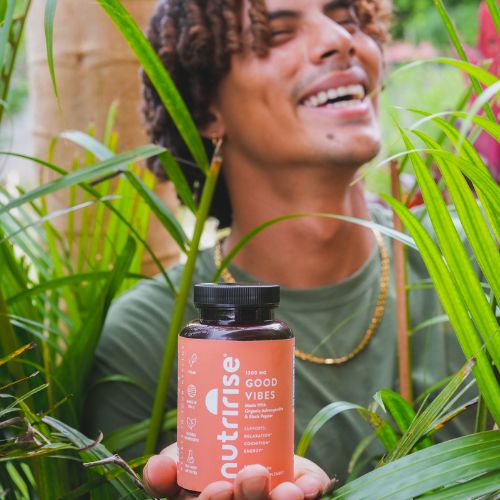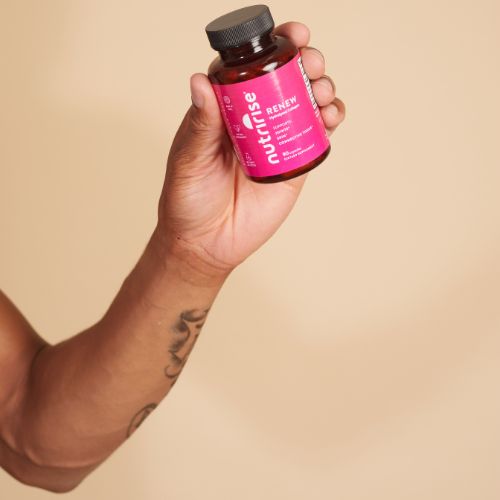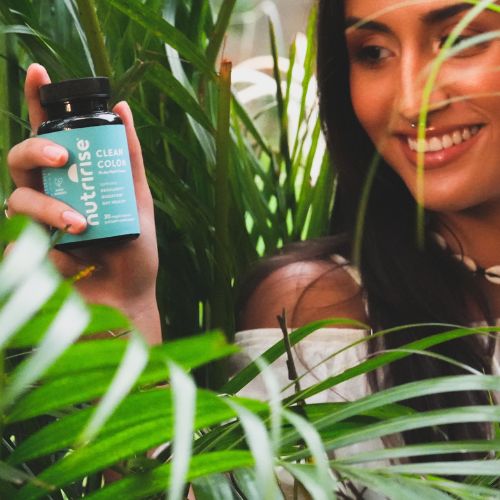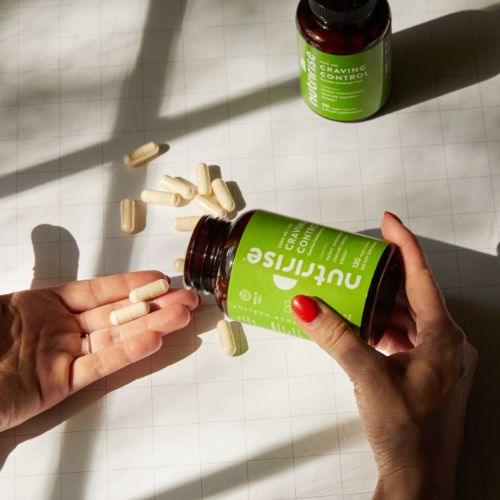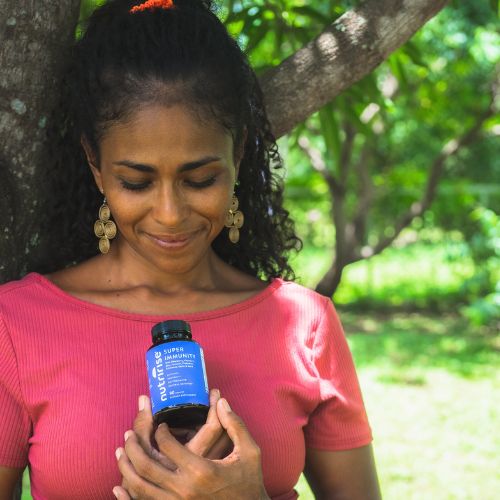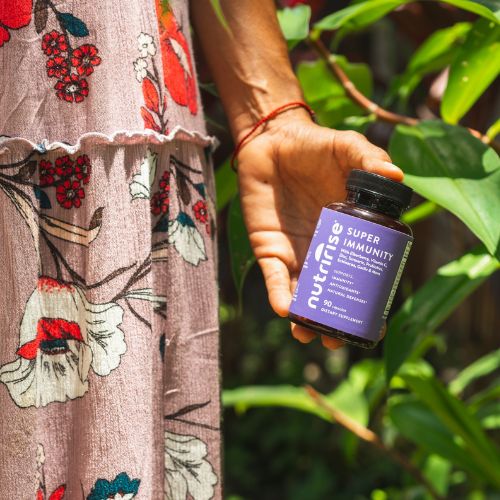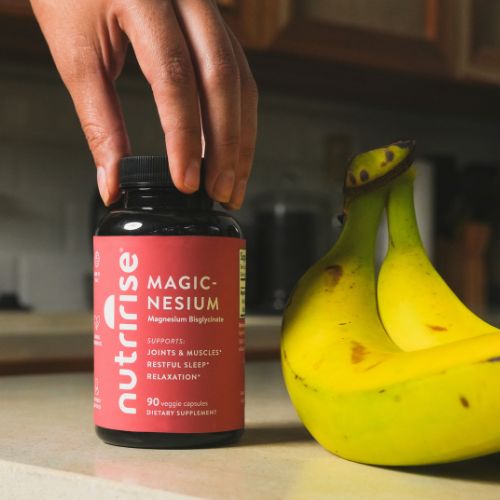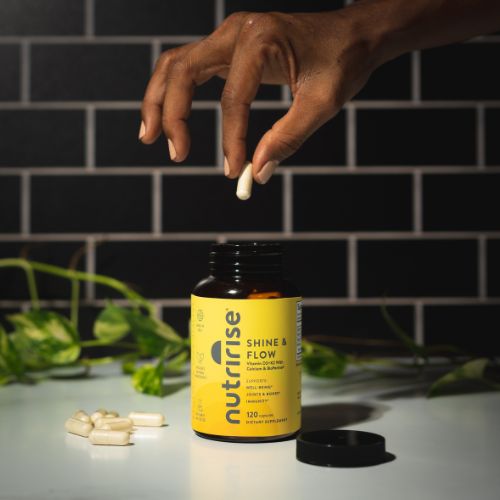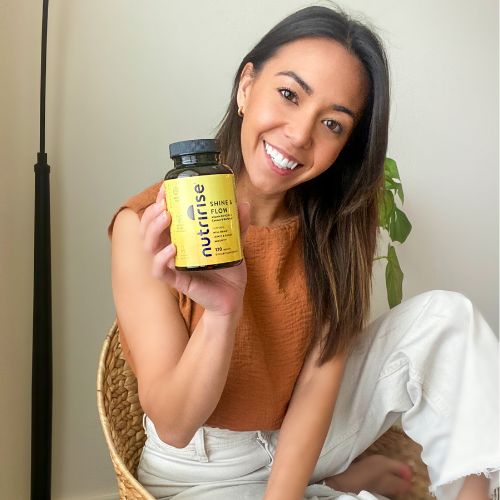What are the benefits of ashwagandha?
Ashwagandha is a plant that has been prized for its medicinal properties for thousands of years. It is also known as Withania somnifera in Latin and this ancient medicinal herb that has been used for centuries to reduce stress and increase overall well-being.
It is an ancient remedy from the Ayurvedic system of medicine that has been used for stress relief, sleep aid and other general health benefits.
This stress-relieving powerhouse is the world's most commonly used adaptogenic herb. It works by helping your body manage stress signals in a way that feels better physically and mentally.
Not only does this medicinal plant help with stress and anxiety, but clinical studies show that ashwagandha supplementation can also can improve sleep quality, boost energy levels, elevate sexual health and male fertility, and even have anti-inflammatory properties.
Its ability to assist in calming stress also provides some significant mental health benefits including increased focus and improved executive functioning abilities.
Studies have found that ashwagandha helps regulate cortisol levels which leads to better stress management and enhanced physical performance [1]. If you’re looking to reduce stress or gain more control over it, ashwagandha may be the answer!
Recent clinical trials have also looked at how the root extract of ashwagandha can affect sleep quality - with promising results! Its sedative properties may help in promoting better sleep [2].
Since stress can have particularly devastating effects on female hormones, overall health and wellbeing, and weight management (read more about the ashwagandha benefits for weight loss here) this traditional herbal therapy may be one of the best natural remedies for stress-related symptoms that women encounter in their daily lives.
Which part of the ashwagandha plant should be used?
Ashwagandha is an incredibly powerful plant. It is often used in traditional medicine to provide relief from anxiety and stress and aid in better sleep. When it comes to ashwagandha, the choice between using either the root or leaf can have a big impact on its effects.
Both parts of the plant contain the main bioactive substances of Ashwagandha which carry the majority of its benefits - withanolides.Thus, they are the biologically active compounds that give ashwagandha its medicinal properties.
Withanolides are a group of naturally occurring steroid lactones that have been shown to possess a wide range of pharmacological activities, including anti-inflammatory, antioxidant, immunomodulatory, and anti-cancer effects [3].
Specifically, withanolides have been shown to modulate the activity of various signaling pathways in the body, including those involved in the stress response, inflammation, and cell growth and differentiation. They also interact with various neurotransmitters, including GABA and serotonin, which are involved in mood regulation and anxiety.
Notable withanolides in ashwagandha include Withaferin A, Withanone, Withanolide A, Withanolide E, Withanoside IV, Sominone, and others. They have different properties despite the similarities in their structures.
For example, animal studies suggest that a major contributor to the cortisol-reducing properties of ashwagandha is Withanoside IV [4]. Another withanolide called Withanone was found to increase lifespan and survival in human cells [5].
While most withanolides are found in Ashwagandha leaves and roots alike, their concentrations can vary significantly. It's important to note that withaferin A has higher concentration in Ashwagandha leaves than roots.
This withanolide has powerful cytotoxic effects, and in vitro studies show it induces the death of specific cells - usually bacterial and malignant cells [6] [7] [8] [9].
While it may have significant medicinal potential that is still under investigation, consuming too much of it as a supplement is not recommended and thus, Ashwagandha leaf is not the optimal choice for dietary supplements.
Ashwagandha leaves also have higher levels of Withanone and Withanoside IV [10].
On the other hand, Ashwagandha root has higher levels of Withanolide A - a safe and well tolerated withanolide which has potent anti-inflammatory and neuroprotective effects according to research [11].
Ashwagandha roots also have higher levels of 27-deoxywithanone, Withanolide B, Withanolide C, Withanolide D, and Withanoside VI [12].
How long can you take ashwagandha root?
Ashwagandha root supplements are generally safe for most people when taken as directed. The duration of use can vary depending on the specific reasons for taking the supplement, and individual factors such as age, health status, and other medications being taken.
For general health and chronic stress reduction, ashwagandha root supplements can be taken daily for several months to a year or more. Many studies have used doses ranging from 300-600mg of ashwagandha root extract taken one to two times per day for up to 12 weeks or longer [13].
However, it is important to note that long-term safety studies on the use of ashwagandha are limited, so it is recommended to consult with a healthcare provider before taking ashwagandha root supplements for an extended period of time.
Additionally, it is important to follow the recommended dosage instructions on the supplement label and not exceed the recommended dose without first consulting with a healthcare provider.
Overdosing on ashwagandha root supplements is not gonna lead to additional benefits but it can cause side effects such as gastrointestinal upset, diarrhea, and vomiting.
Which form of ashwagandha root is best?
There are standardized extracts and all-natural full spectrum root extracts. Though both contain beneficial compounds, the nutritional makeup of each form differs.
Standardized ashwagandha extracts are chemically modified to make sure that they contain a certain amount of withanolides. This reduces the total dose you need to take per day, but may also deprive you of many other natural ingredients in ashwagandha.
On the other hand, full-spectrum ashwagandha extracts contain all the ingredients that normally should be found in the ashwagandha roots alongside withanolides.
This includes other steroidal lactones, catechins, sterols, antioxidants and fatty acids that boost the absorption of all other ingredients.
Ultimately, taking an ashwagandha product that contains pure and full-spectrum ashwagandha root extract will provide an overwhelmingly greater benefit in the long-term because it contains all ingredients naturally found in the shrub.
Ashwagandha is best absorbed when taken on an empty stomach, right before a meal. When exploring the best way to supplement the benefits of ashwagandha, it’s important to weigh all the advantages and disadvantages of various forms.
Though there are many ways to take ashwagandha, capsules are usually the most simple and easy to take option. Also, it ensures that you get controlled and consistent doses of ashwagandha extract and withanolide content each time, so that you get reliable results each day.
On the other hand, Ashwagandha powder is primarily preferred by people who have issues with taking capsules, such as trouble swallowing.
If you are looking for capsules that contain 100% natural full-spectrum root extract, look no further than Ashwagandha by Nutririse.
Moreover, it contains black pepper extract, which is notorious for boosting absorption of other ingredients thanks to the presence of the alkaloid bioperine which may also help to fight against oxidative stress.
Our capsules contain full-spectrum root extract that is UDAF certified as 100% organic. Moreover each batch undergoes independent third-party testing which guarantees exceptional quality control to ensure you are receiving exactly what you expect - free of GMO, binders, fillers and preservatives.
Therefore, you can rest assured that you are receiving the highest quality supplement for maximum effectiveness and safety.
Note: This article is for informational purposes only and not intended for use as medical advice. Always consult your healthcare provider before starting any dietary supplement.







